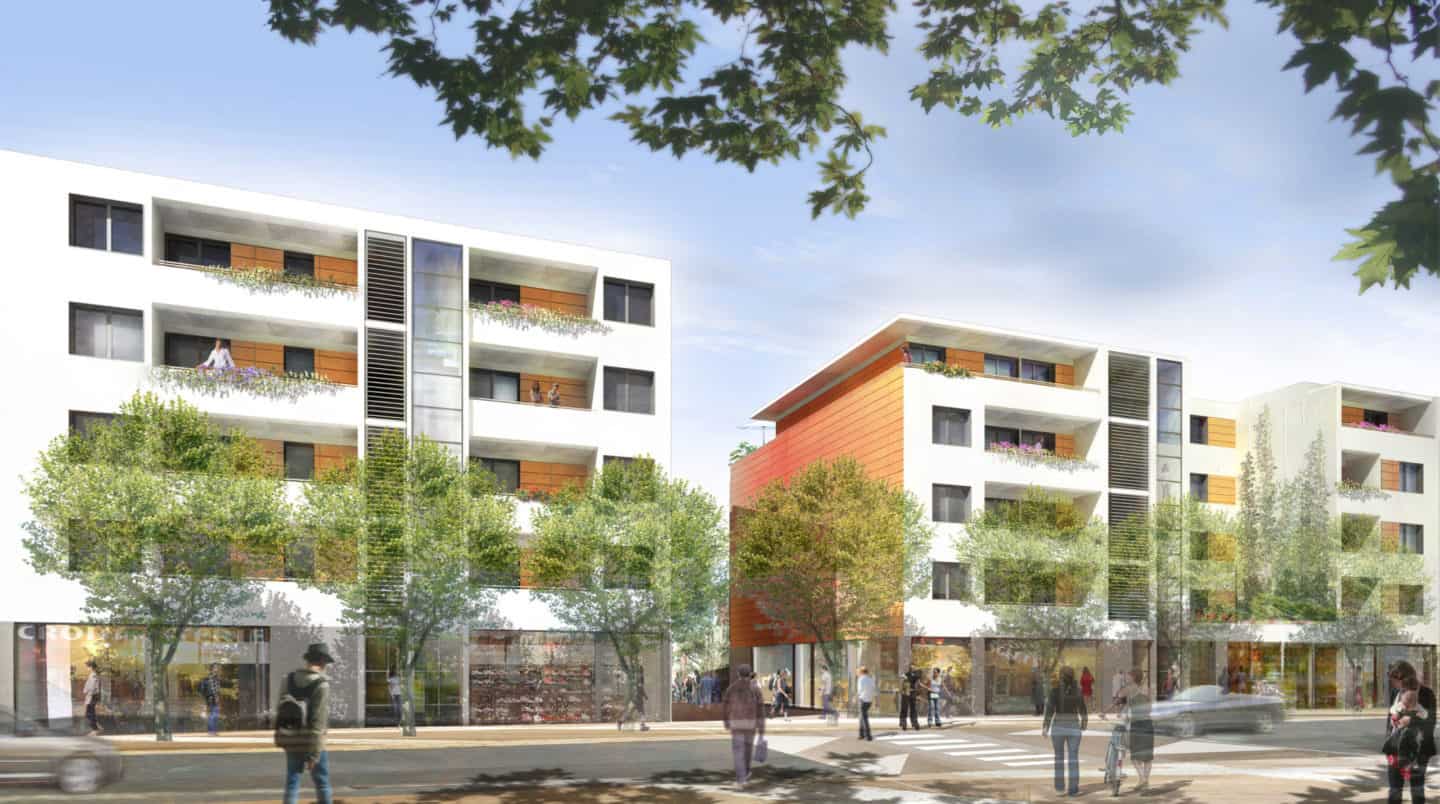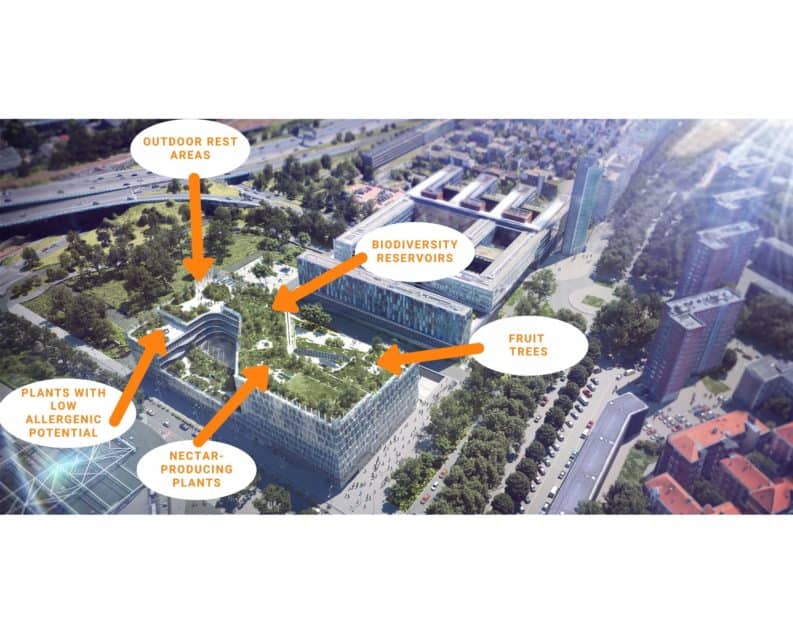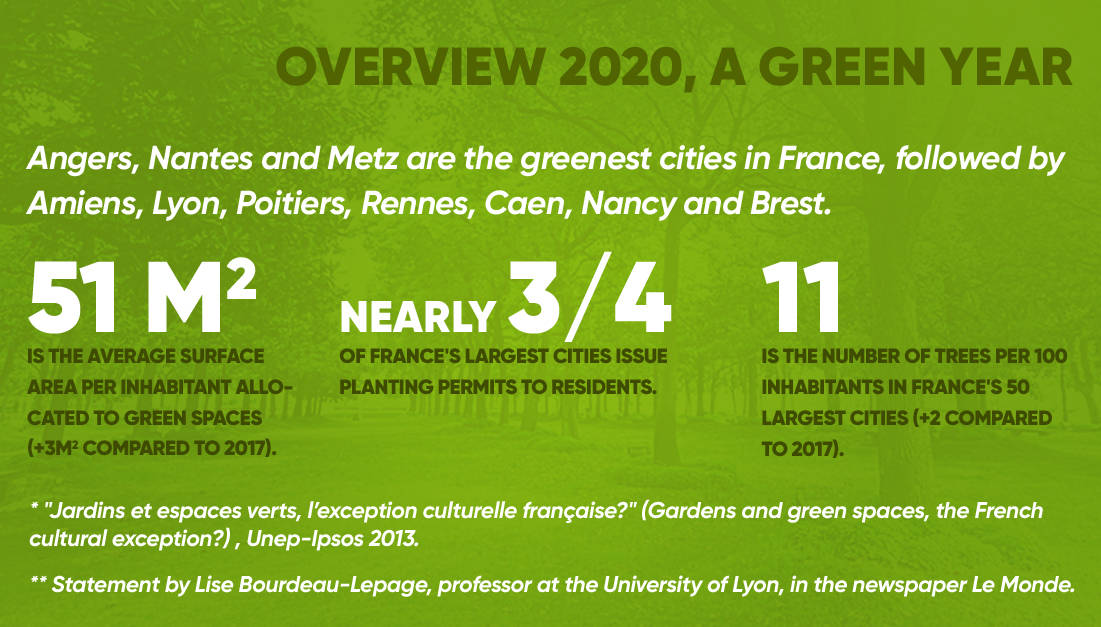
Green spaces: a new criterion for the appeal of cities?
4 minutes of reading
By 2050, almost 70% of the world’s population will live in cities. But not just any old city, mind you! Cities offering a greener living environment are – and are set to become – increasingly popular. So, let’s take a look at the issue of urban planning.

What are city dwellers really looking for?
According to the 2019 IPSOS territories barometer, cities with plenty of greenery are now more attractive than others. Quality of daily life is, more than ever, a priority for French people. This includes: tranquillity, safety, proximity to nature, transport and living environment. This preference is at the root of the exodus that started in 2011: around 12,000 inhabitants leave Paris each year to go and live in the suburbs or the provinces.
Expert opinion
“The demand for nature in the city is a trend that’s quickly gathering pace, reflecting a need to reconnect to the living environment. Nature is invited not only into our parks and gardens, but also, increasingly, onto our terraces and façades! A fine example is the headquarters of Métropole Européenne de Lille, a project delivered by Bouygues Construction in 2019, with 3,000 m² of green roofs featuring 150 trees, 600 shrubs and 15,000 perennial plants! Such integration meets two major challenges: the well-being of city dwellers and the preservation of biodiversity. That’s why this subject has been part of Bouygues Construction’s strategy since 2012, giving rise to actions such as helping to creatr a label specifically aimed at integrating biodiversity into real estate projects: the BiodiverCity label. ”
Anaïs Duperron, environmental project manager at Bouygues Construction
 Do climate issues have a role to play in this quest for greenery?
Our thirst for nature is nothing new! In 2013, seven out of ten Europeans stated they needed to live near a green space*. Likewise, over 50% of those questioned during a survey carried out in Lyon (at the same time) made green spaces the top attribute of an ideal district, ahead of accessibility to shops and safety**. Indeed, this interest in green spaces has certainly grown over the years, amplified by the climate emergency and its dissemination via social media networks – amongst other things.
Expert opinion
“The consequences of climate change are numerous and will continue to multiply: our cities will not be spared. Nature in the city is therefore an important factor for resilience, capable of reducing the risk of floods, for instance, or decreasing the urban heat island effect. In point of fact, the presence of plants or water can lower the temperature in the city by several degrees! ”
Anaïs Duperron, environmental project manager at Bouygues Construction
How are cities reacting to the expectations of today’s city dwellers?
Climate change and the growing interest of locals and visitors in plants, gardens and green spaces are driving cities to become increasingly green! The 3rd edition of the list of the greenest cities in France (Unep-Hortis) even reveals that preservation of urban heritage and its development have become a priority policy for most major cities in the country. A new way of thinking and bringing the city to life: 68% graze animals to maintain green spaces; some let residents decide on green projects in the city via participatory “eco-citizen” budgets; more and more are abandoning pesticide products and investing increasingly in green spaces.
Do climate issues have a role to play in this quest for greenery?
Our thirst for nature is nothing new! In 2013, seven out of ten Europeans stated they needed to live near a green space*. Likewise, over 50% of those questioned during a survey carried out in Lyon (at the same time) made green spaces the top attribute of an ideal district, ahead of accessibility to shops and safety**. Indeed, this interest in green spaces has certainly grown over the years, amplified by the climate emergency and its dissemination via social media networks – amongst other things.
Expert opinion
“The consequences of climate change are numerous and will continue to multiply: our cities will not be spared. Nature in the city is therefore an important factor for resilience, capable of reducing the risk of floods, for instance, or decreasing the urban heat island effect. In point of fact, the presence of plants or water can lower the temperature in the city by several degrees! ”
Anaïs Duperron, environmental project manager at Bouygues Construction
How are cities reacting to the expectations of today’s city dwellers?
Climate change and the growing interest of locals and visitors in plants, gardens and green spaces are driving cities to become increasingly green! The 3rd edition of the list of the greenest cities in France (Unep-Hortis) even reveals that preservation of urban heritage and its development have become a priority policy for most major cities in the country. A new way of thinking and bringing the city to life: 68% graze animals to maintain green spaces; some let residents decide on green projects in the city via participatory “eco-citizen” budgets; more and more are abandoning pesticide products and investing increasingly in green spaces.


BIOTOPE: a biodiversity building at the centre of France’s third largest business district, in Lille.

More reading
Read also




What lies ahead? 7 megatrends and their influence on construction, real estate and urban development
Article
20 minutes of reading

